What happens to your green bin materials? We toured Yellowknife's compost facility to find out
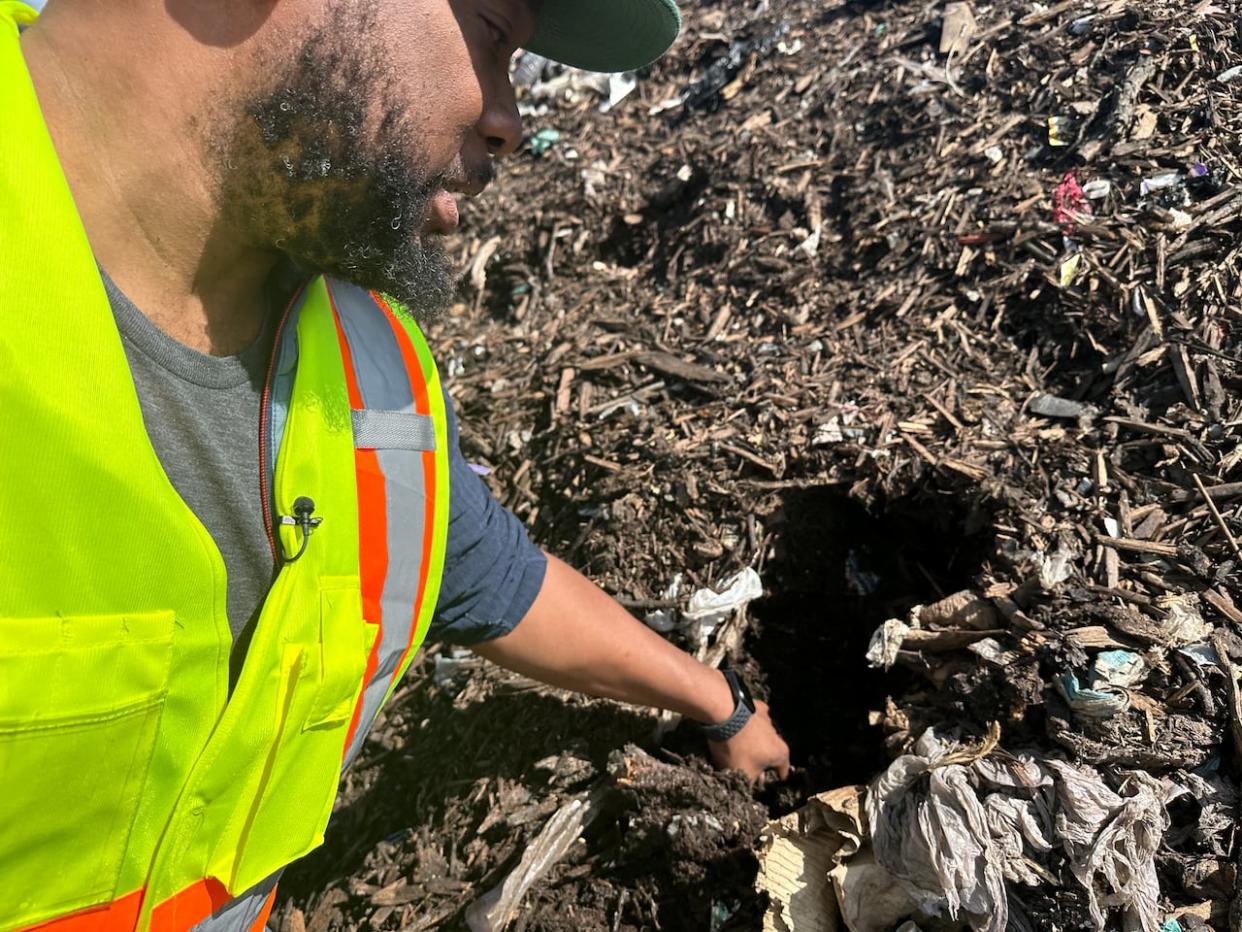
Chris Vaughn uses a bare hand to dig into a pile of organics that have been curing at Yellowknife's landfill for a few months. He pulls back finished compost, partly decomposed wood chips, and a plastic spoon.
"This is the annoying stuff," he said, grabbing an old shampoo bottle.
The spoon and the bottle aren't the weirdest things to have been thrown into the city's green bins. But Vaughn, the city's manager of solid waste and sustainability, doesn't think it's a reason to despair about the quality of Yellowknife's organics composting program.
"I think people should be proud of this program. It's probably one of our most successful diversion programs," he said. "It's looking good."
Three years ago, the city stopped selling the end product of its composting program to residents because it no longer met the criteria for public use. Instead, Vaughn said, it's now used productively around the landfill for erosion control and as landfill cover, and the hope is to eventually begin selling it to the public again.
The City of Yellowknife started composting as a pilot project in 2009. Food waste was collected from restaurants and grocery stores and the end product was good enough to sell back to residents for gardens. Four years later, the program began expanding to collect organics from homes and industry as well, and the facility as it exists now was built.
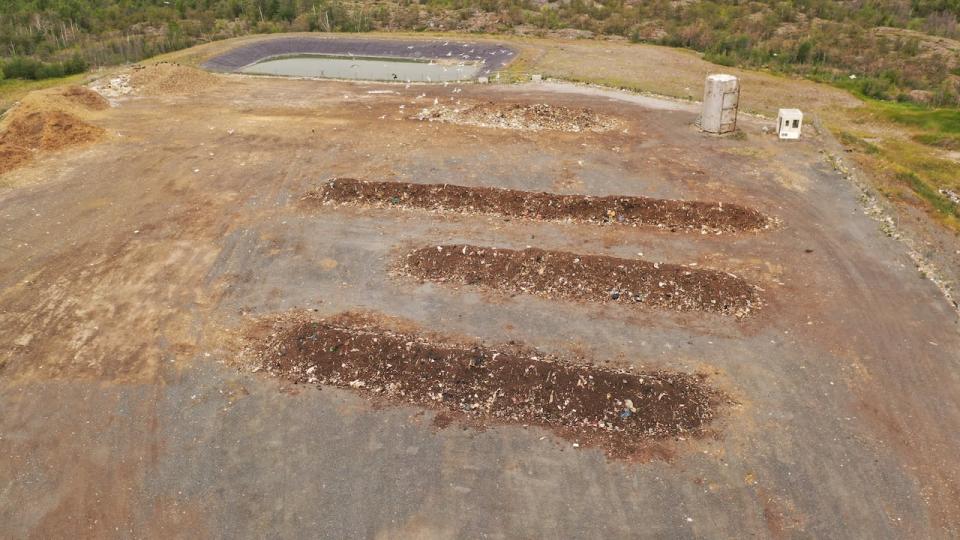
The City of Yellowknife uses the windrow composting method to process materials collected in its curbside green cart collection program. (Travis Burke/CBC)
The space, a 15,000-square metre pad at the far west end of Yellowknife's Solid Waste Facility, is entirely outdoors. When CBC News toured it in June, it consisted of four towering rows — referred to as windrows — of organic material in various stages of decomposition.
There were also piles of wood chips and shredded cardboard and paper in one corner: forms of carbon used to balance out the nitrogen-rich food scraps in the compost recipe.
Inside the process
There are two ways Yellowknife's organics get to the compost facility: either by being tossed into the green cart provided to single-family homes, or through specially-marked green dumpsters around the city.
The material is then picked up and brought to the landfill where it gets weighed and dumped into rows. Vaughn said city staff will remove obvious contaminants, mix in carbon amendments, add water and regularly check the temperature.
The pile needs to reach more than 55 C for 15 days to destroy possible pathogens, said Vaughn. Then, it moves into the curing stage, which lasts months. After that, contaminants are sifted out and samples are sent to the Compost Council of Canada for quality testing.
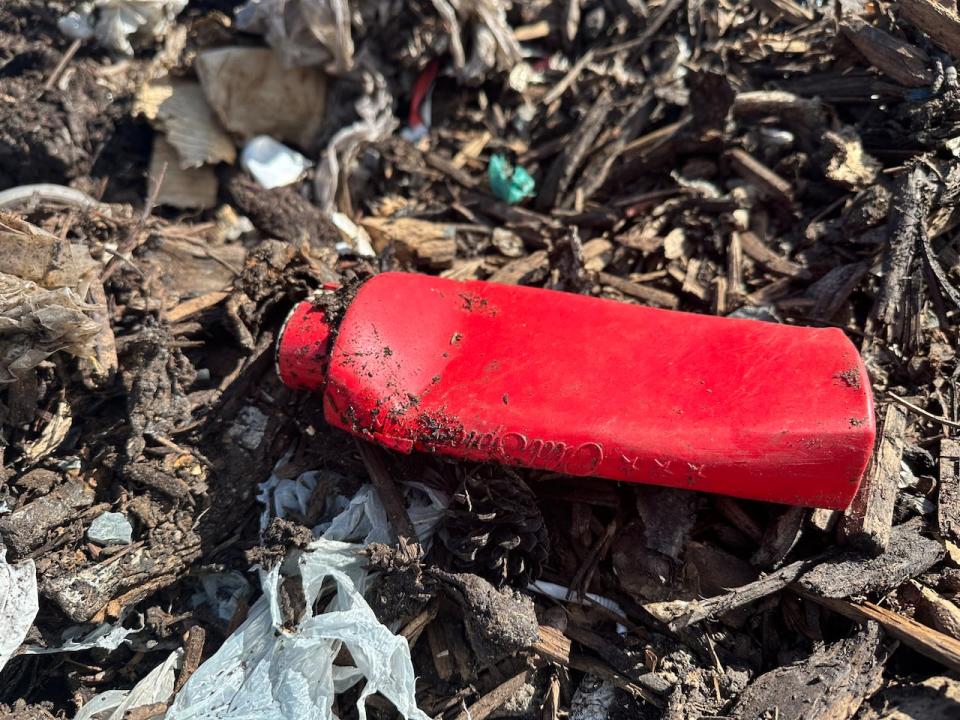
A plastic hygiene-product bottle among the organics piled at Yellowknife's compost facility. Vaughn said items like this are sifted out at the end of the composting process. (Liny Lamberink/CBC)
Vaughn said the entire process takes one-and-a-half to two years, and is slowed down by extreme cold in the winter.
Whitehorse boasts a 'wicked' product
The City of Whitehorse, however, does sell its compost.
The city boasts online that its product is "superior" and the city's associate manager of solid waste, Ira Webb, described it as "wicked." But there are a few factors that make Whitehorse's compost different from Yellowknife's.
For starters, the municipal program in Whitehorse has been running longer. Webb said the city started composting through pilot projects in the '90s. When it started collecting residential organics, Webb said it used a windrow system like Yellowknife has now. It eventually started to aerate those windrows and then, five years ago, it built a new facility with underground aeration pipes.
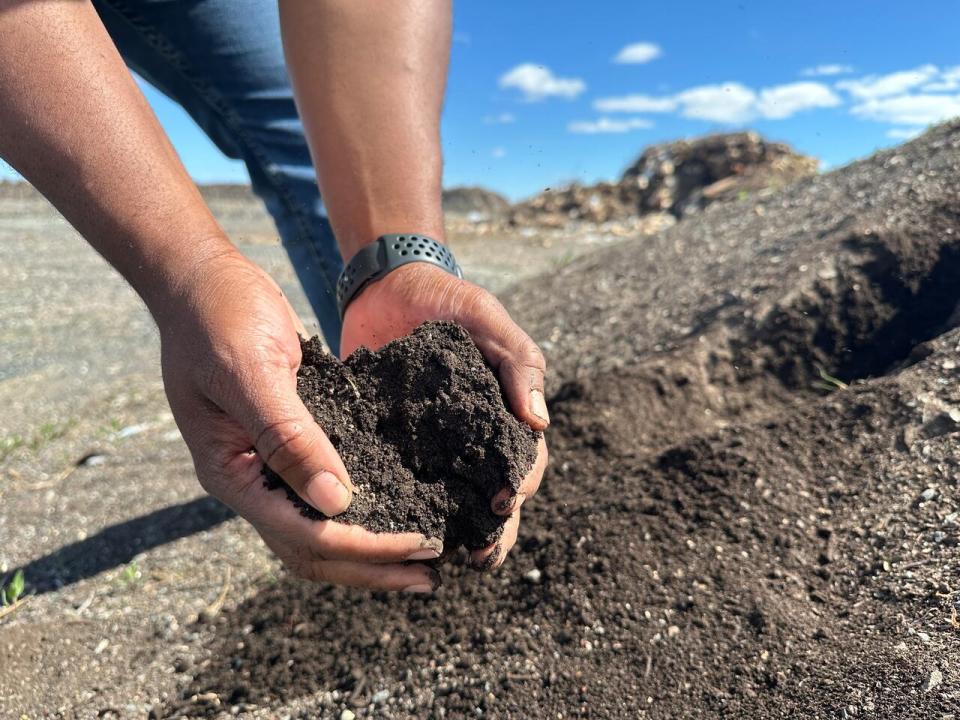
Vaughn holds up a handful of finished compost. (Liny Lamberink/CBC)
Webb said the city also brings in enough compost that the windrows continue to compost throughout the winter, unlike Yellowknife.
"Even at -40 C … you'll see the steam coming off the piles," he said.
But Webb said they still find things that shouldn't end up in the Whitehorse's compost too, including materials that claim to be compostable, but aren't.
"Maybe we're a little better because we've been doing it a long time and people are kind of used to it, but it's an ongoing, even now, it's an ongoing challenge for sure," said Webb.
Lawn mower among strangest of green bin items
Vaughn said educating Yellowknife residents about what should and shouldn't go in the green bin is tough.
"We have a lot on our plates and our communications team is small but mighty," he explained. The city tries to put out reminders on Facebook and does the occasional educational campaign, he said.
Vaughn said staff also go out and do spot checks — taking a look at what's in residential green carts and putting a notice on people's bins or door knobs if they're doing it wrong — but only when they have capacity to do so.
He offered residents a few pieces of advice: if you've got a coffee cup that claims to be compostable, look for the BPI logo before throwing it in the green bin. He said that's the "gold seal" of a certified compostable product.
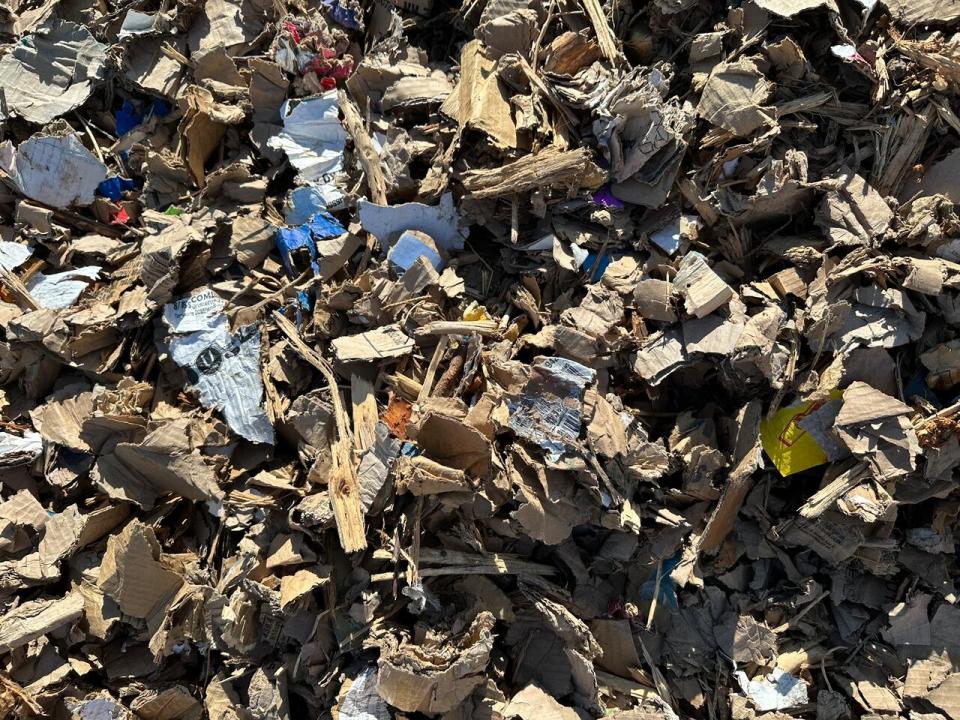
The city takes cardboard collected at recycling bins, shreds it and mixes it in with the compost. (Liny Lamberink/CBC)
"If you're not sure, don't put it in the green bin, because you risk contaminating the whole windrow, or at least that load."
Fruits, vegetables, meat, bones, dairy products, bread and coffee grounds are allowed in the green bin, according to the city's operations and maintenance manual.
Tetra packs, cigarette butts, dead animals, dog poop, cat litter and diapers, however, are not.
Although the following items aren't specified on the prohibited list, Vaughn considers them to be the strangest items ever found in the city's organics program: lawn mowers, TVs and a bicycle.
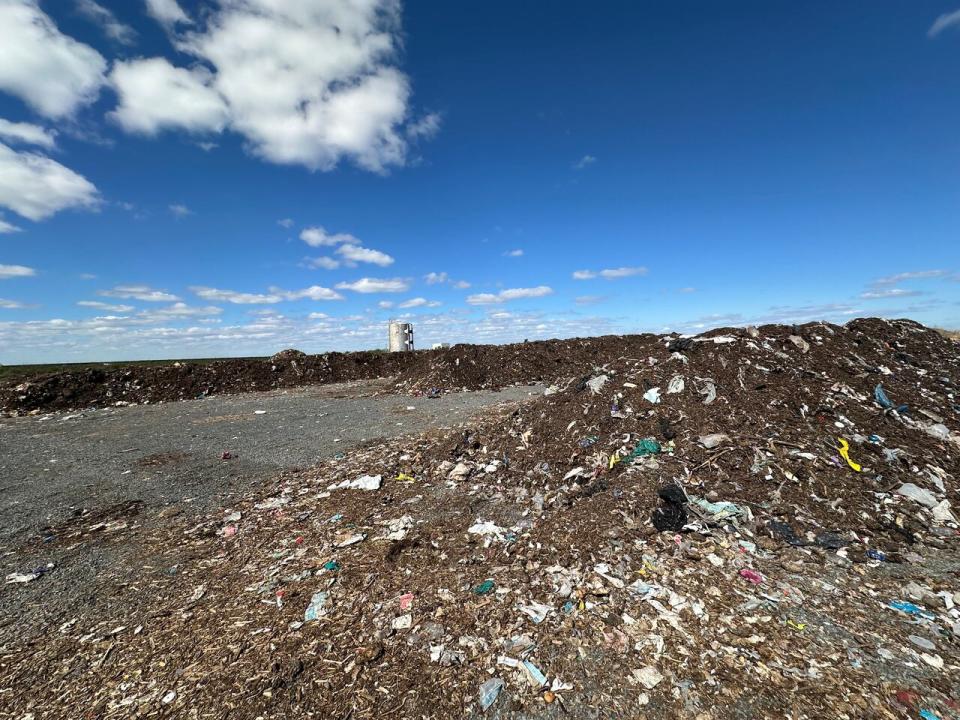
Organic materials collected in Yellowknife's green bins end up here, in windrows on a concrete slab at the city's landfill. (Liny Lamberink/CBC)
"I don't want to discourage people, the majority of people are doing it right. The majority of the stuff that comes in here is compostable material. It's just striking to see, sometimes, some of the oddballs," he said.
Whether Yellowknife will again sell its compost depends on samples being sent to the Compost Council of Canada for testing this year, said Vaughn. Those samples were expected to be sent sometime this summer.


